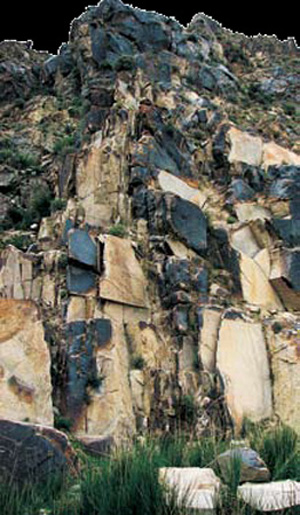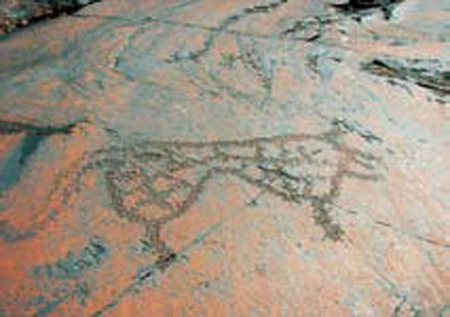Rock engraving culture displays history of Qinghai Plateau
2009-08-14 19:39 BJT

Photo shows a distant view of the rock engravings on the Lushan Mountain, Haixi Tibetan Autonomous Prefecture, northwest Qinghai Province. (Photo Source: ctibet.org.cn)
BEJING, Aug. 13 (Xinhuanet) -- Northwestern Qinghai‘s Haixi Tibetan Autonomous Prefecture, lying on the northern Qinghai Plateau, features lofty mountains such as Mt. Kunlun and Qilian.
There, ancient rock engravings are integrated into a unique scenery, displaying historical changes of human society.
From weathering of the rocks and carving styles, people can find patterns on the rocks carved during different times.

Photo shows a pattern resembling a snow leopard carved on a rock of the Lumang Mountain, Haixi Tibetan Autonomous Prefecture, northwest Qinghai Province. (Photo Source: ctibet.org.cn)
But some scenes the engraving presents differ from today‘s geographic environment where the engraving is located. For example, the place where animals and plants were depicted on the rock has now turned into an expansive and sparsely-vegetated Gobi desert.
Thus, it is guessed that those symbols representing woods and wildlife might have been engraved during an epoch when that area was still forested, because both the historical data and modern scientific evidence show that the Qinghai Plateau has probably experienced an evolutionary process from a sea to forest and then to grassland.

 Mail
Mail Share
Share Print
Print


 Video
Video









 2009 China Central Television. All Rights Reserved
2009 China Central Television. All Rights Reserved